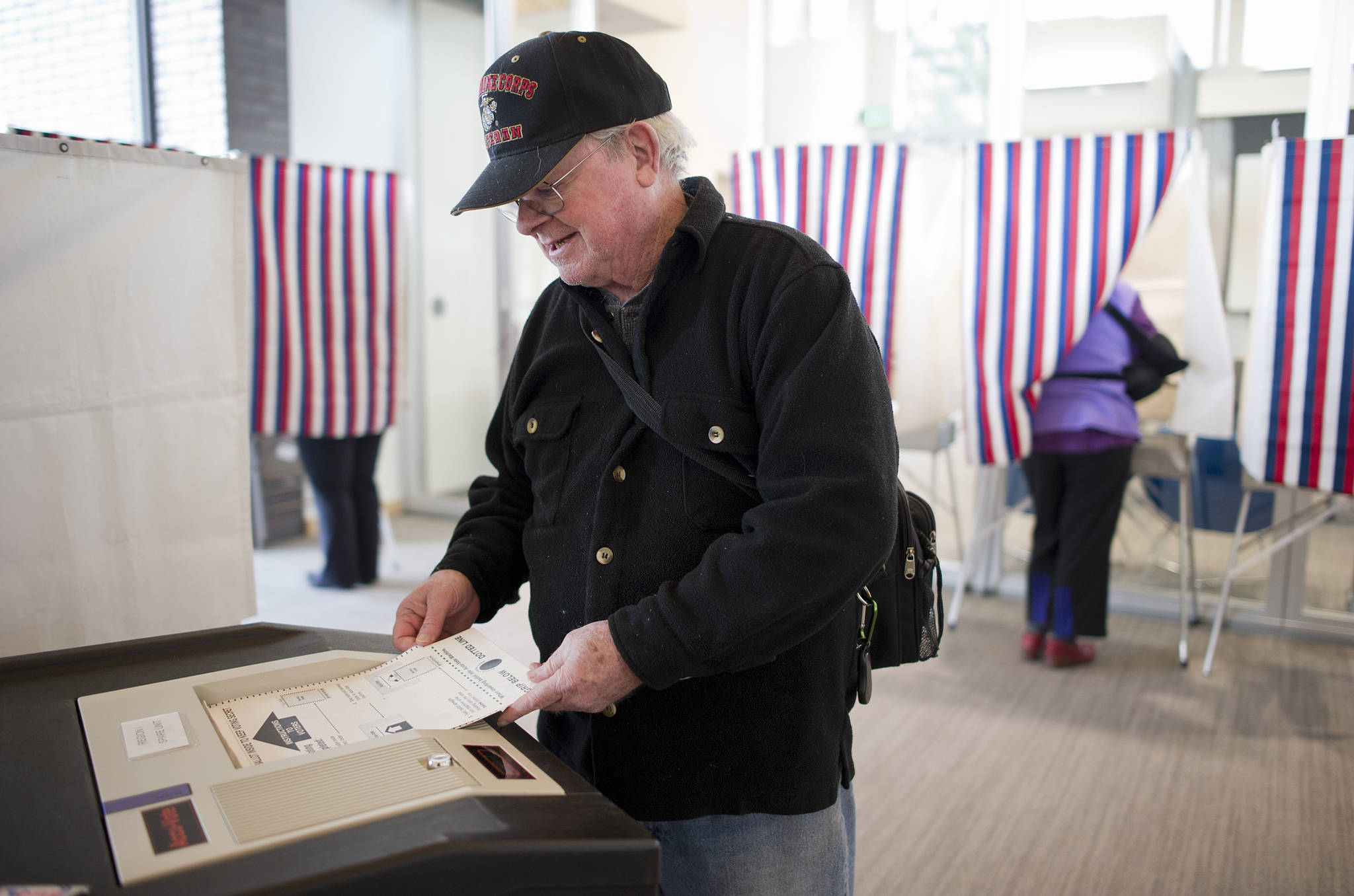Correction: A headline associated with an earlier version of this story incorrectly stated that there was a problem with voting machines. The problem is with the cards used to end the election.
Election results from isolated precincts in Southeast Alaska are slowly trickling into the Division of Elections, two days after polls closed across the 49th state.
Samantha Miller, a spokeswoman for the division, said by email early Wednesday that the problem is with various machines’ “ender cards.”
Alaska tabulates its paper ballots by feeding them into an electronic scanner not unlike the system used for Scantron fill-in-the-oval tests at schools. After the last ballot goes through the scanner, poll workers are supposed to feed the machine a card that instructs the scanner that the election is over and that results should be tabulated.
“It was reported that some of these ender cards were no longer functioning properly because the tracking marks were not being read by the machines,” Miller wrote.
“We are coordinating the delivery of the memory cards to the director’s office as soon as possible,” she said.
By sending memory cards to the division director’s office in Juneau, elections officials are able to insert them into a working scanner, then feed an appropriate ender card.
Nine precincts across Southeast were affected by the error, and by the end of the business day Thursday, five still had not reported results: Craig, Klawock, Thorne Bay, Hydaburg and Metlakatla.
“Those haven’t arrived yet,” Miller said.
Those precincts are in House districts 35 and 36 and could affect the results from Election Day.
In House District 35, incumbent Rep. Jonathan Kreiss-Tomkins, D-Sitka, leads Republican challenger Richard Wein by 666 votes. Craig has 1,156 registered voters; Klawock has 749, and Thorne Bay has 681.
In District 36, incumbent independent Rep. Dan Ortiz, I-Ketchikan, leads Republican challenger Trevor Shaw by 833 votes. Metlakatla, Alaska’s southernmost community, has 1,043 registered voters. Hydaburg has 290 registered voters.
Much of Alaska’s voting equipment would itself be eligible to vote if it were human. The two-decade-old system of optical scanners and dial-up modems used to tabulate ballots is scheduled for replacement, and the division has already convened a special task force on the topic.
Earlier this year, the task force agreed that the new system should be in place by the 2020 election.
• Contact reporter James Brooks at jbrooks@juneauempire.com or 523-2258.

